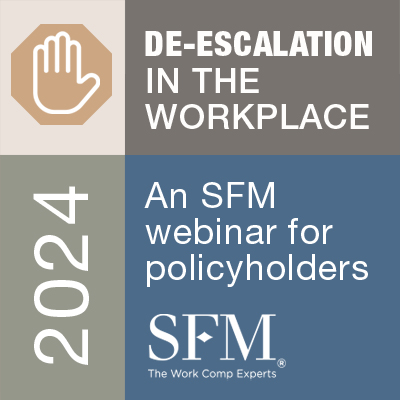Can you terminate employees with an open work comp claim?
The answer is — it depends.
While most states have laws that bar employers from terminating or disciplining an employee solely based on them being on workers’ compensation or in response to their experiencing a work injury, there are conditions under which such an employee may be let go.
For example, an employee hurt their back and files for work comp benefits. Then, the employer learns that worker is embezzling from the company. In that case, the employer would likely have just cause to fire that employee, for reasons unrelated to their work injury.
The key is to separate review of the performance concern from the work comp claim. While a work injury does not immunize an employee from discipline for performance problems, including termination, the nuances are important and the risk of retaliation is real.
In another example, what if an employee disregarded safety rules while driving a forklift and injured themself and another worker. They could still be disciplined for engaging in unsafe practices, if the employer was consistent in treating other similarly situated employees the same way. If the employee claimed that the discipline was in retaliation for the work injury or filing for work comp, the employer would have to prove the discipline was non-retaliatory.
If an employee feels they’ve been wrongfully targeted for exercising their protected right to file a workers’ compensation claim, they may in turn file a retaliation claim, which opens the employer in many states (including Minnesota ) to civil damages, including potentially punitive damages or penalties.
The cost of termination
It’s also important to note that termination of employment does not terminate the work comp claim. Some employers may try to reduce or limit the payable lost-time benefits on a work comp claim by terminating the employee for a reason unrelated to the work injury. However, this idea may ultimately make the claim more costly.
Depending on the circumstances surrounding the termination, temporary total disability and temporary partial disability benefits may still be available to an employee up to the statutory caps on the benefits. Therefore, terminating the employee may cost the employer more in wage-loss benefits compared to actively working with the injured employee to return to work.
Two other examples of benefits an employer could continue to pay after terminating employment are vocational rehabilitation treatments post-injury, and assistance in their search for a new job.
Plus, if the employer is found to have terminated the employee in relation to their work comp claim, they may be responsible for paying the employee civil damages, including punitive damages.
Other forms of retaliation
Retaliation against an employee with a work comp claim can take other forms besides termination, including:
- Failing to provide a First Report of Injury Form at the time of injury or telling the employee they can’t seek medical attention for their injury
- Demoting or transferring the employee to a less desirable position
- Denying overtime, a promotion or pay increase
- Reducing pay, hours or benefits
- Unjustifiably low performance evaluations
- Unexpectedly changing the employee’s schedule or work location
- Intimidating the employee or creating an unpleasant work environment
Other resources
For employers who are experiencing challenges with problem employees and work comp, SFM has additional resources that may prove valuable.
Keeping problem employees on staff can increase workers’ compensation costs
Many times, these employees should have been disciplined or even fired before they reported work injuries. But once a workers’ compensation claim has been filed, disciplining or firing an employee can become much more complicated, and costly.
How to discipline employees who’ve experienced work injuries
Simply because an employee sustained a work injury does not excuse that employee from performing the duties and expected standards of the job.
Conclusion
Employers should ensure they understand the relevant statutes, and map out potential pitfalls, before taking adverse employment action against an employee on work comp.
This is not intended to serve as legal advice for individual fact-specific legal cases or as a legal basis for your employment practices.



 Minnesota Gov. Tim Walz
Minnesota Gov. Tim Walz 

 They came. They saw. They learned a lot about workers’ compensation.
They came. They saw. They learned a lot about workers’ compensation.